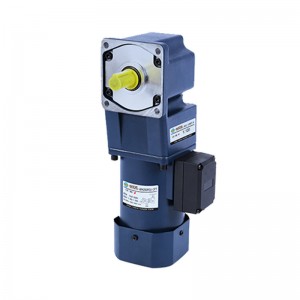XD210 air cooling series
Product Parameter
| Serial number | Product number | Rated power | Rated speed | Rated torque | Load equipment | Corresponding models |
| 1 | XD210-7.5-01 | 7.5KW | 2000rpm | 35.8Nm | fan | Small sanitation vehicle (below 2 tons) |
| 2 | XD210-10-01 | 10KW | 1500rpm | 63.7Nm | water pump | Road maintenance vehicle(5040) |
| 3 | XD210-10-02 | 10KW | 1500rpm | 63.7Nm | oil pump | Garbage Compressor (5040) |
| 4 | XD210-15-01 | 15KW | 2000rpm | 71.6Nm | oil pump |
How to deal with the water inflow of the electric sanitation vehicle motor?
Electric sanitation vehicles are not as closed as we imagined. Rainy weather frequently arrives. Electric vehicles are afraid of water. When driving in water, it is easy to short-circuit and burn out components. Try not to ride in deep water, especially the motor, and the controller must be well protected.
After every heavy rain, a batch of electric vehicles will fail due to the water ingress of the motor. The internal water of the motor is rusted, resulting in power consumption of the motor, which will cause the electric vehicle to run not far, and there is a potential safety hazard. It needs to be repaired and eliminated in time. So what should you do when your electric car gets into the water?
1. Clean the foreign matter inside the motor end cover screws. Remove the end of the motor end cover with the motor wire. The motor screws are generally hexagonal wire. A certain amount of sludge is "injected" into the hexagonal wire, which hinders the disassembly. You can use a sharp awl to clean up the "foreign objects". It is much easier to disassemble.
2. Remove the inner sealing rings of the end caps on both sides of the motor. Because the motor will rust when water enters, the motor shaft and motor bearing will be stained with rust, disassemble the seal and spray rust remover, so that the stator and the rotor can be better separated.
3. Adjust the multimeter to the "on-off position", and measure whether the three phase wires of the motor are connected with the outer casing of the motor or have a resistance value display, indicating that water has entered the motor. There is water inside the motor, which causes the Hall pin to be connected to electricity, causing "shake" or the car will not go.
4. Remove the motor. The premise step is to first derust and lubricate the screws to be disassembled, so as to help the disassembly, so as to avoid rust and rust, forcible disassembly is easy to slip! Let it "penetrate" and disassemble smoothly.







